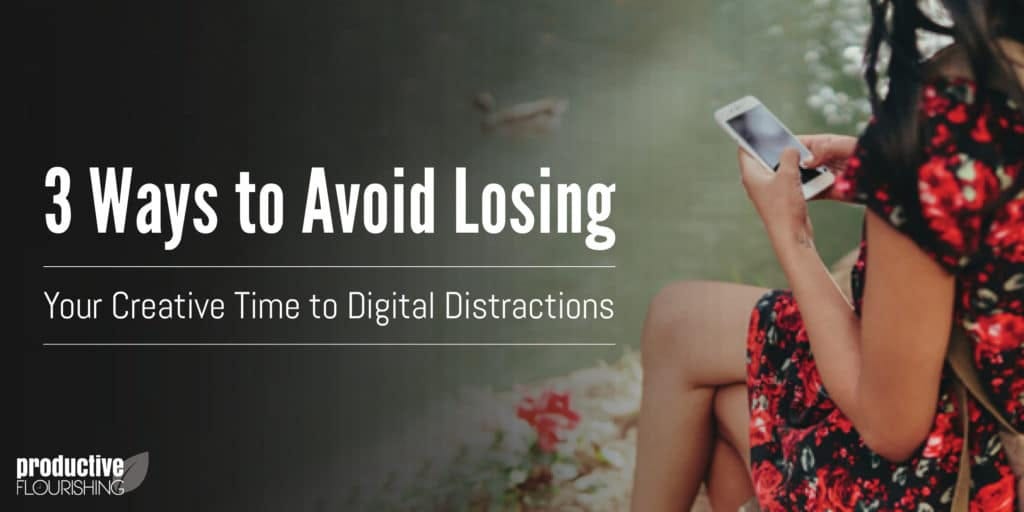3 Ways to Avoid Losing Your Creative Time to Digital Distractions

During my interview for Cory Huff’s book launch party, I was discussing why Facebook and YouTube aren’t really interruptions — they’re digital distractions. Distractions and interruptions may be keeping you from your best work. I lump them together because they’re unplanned diversions from your work, but their causes are fundamentally different, so addressing them requires different responses.
Interruptions are externally forced upon us, whereas we choose to be distracted. Your laundry and YouTube don’t knock on your door; kids and pets do.
Someone asked a great question, though: What if you create on YouTube? What if your work is actually on Facebook? Those questions illuminate the tension we all feel in that the mediums of purposeful work are also the mediums of distraction — we can’t just cut out the medium. Email, Facebook, YouTube, Slack, and so on thus require a different degree of discernment than, say, Hulu or TV, for those of us not in the media industry or ecosystem. At the same time, we know the difference between being in a medium purposefully and being there out of habit or because we need a quick hit of digital dopamine. So, what to do? Some of our work is there, but the non-work stuff can displace the work stuff.
Here are three quick(ish) ways to handle this tension:
Be specific about the tasks you need to do before you head there. As with objectifying email, you can be clear about what specific items you need to watch, post, or share.
Use timers to make sure the work-graze slide is minimized. A new favorite of mine is marinaratimer.com because it handles Pomodoro and custom timers nicely.
As always, firewall your creative time as much as possible and consider separating distraction-prone tasks into blocks of time when you can be distracted without displacing your deep creative time.
We can’t avoid the Loop entirely, but we can be better about making sure it doesn’t eat away at our deep creative time.
The simplest way to deal with distractions is to block the distraction entry point. If you don’t have access to YouTube, you won’t spend hours watching video after video. The strategies below (expounded on more in Chapter 9 of Start Finishing) get successively more aggressive at blocking distractions:
Make your daily momentum plan before jumping onto distraction sources.
Create better defaults during transition periods to replace the distracting defaults you may have.
Turn off all notifications and make ample use of Do Not Disturb.
Lock yourself out.
Delete apps or remove capabilities.
Use dumbtech.
Finding the right combination of distraction-blocking strategies may take a little time and money, but consider how much of your week you’re on the Loop, recovering from being distracted, or frustrated that the open time you had during the day was lost. Since we choose to be distracted, we can choose not to be.
If you’d like even more ideas on how to handle distractions, or ways to get your idea to done, Start Finishing is your solution.


